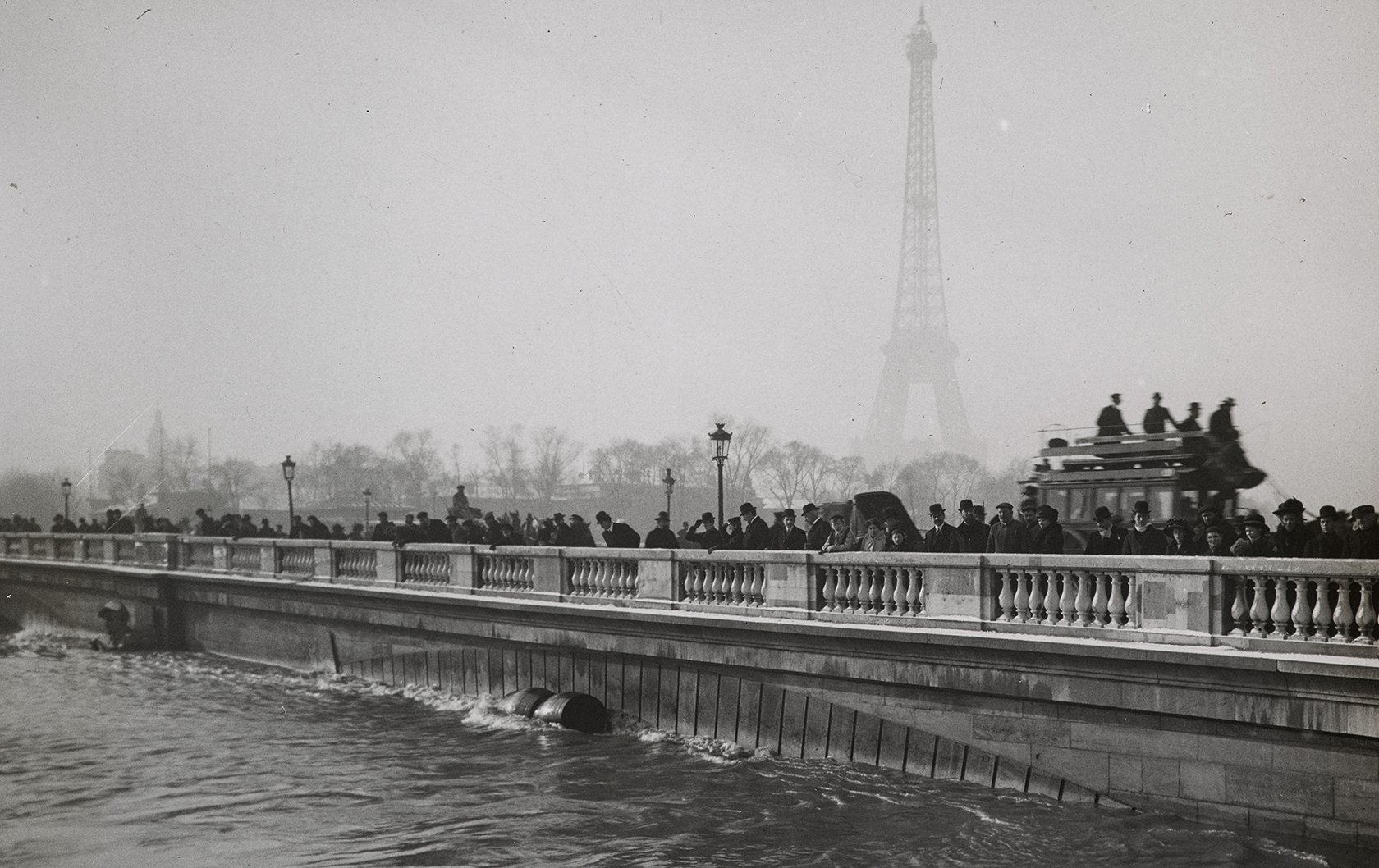
The flood of 1910 on the Pont de l’Alma bridge (Credit: Séeberger frères / Centre des monuments nationaux)
Paris has always been a dream for photographers. While capturing the magic of the City of Light, photographers have also preserved key moments in the city’s history. In the latest installment of his ultimate guide to the 7th arrondissement, Oliver Gee of The Earful Tower shares seven of the most intriguing and surprising photographs of this neighborhood. Last year Oliver and his lovely wife, Lina of Parisian Postcards, stayed with Paris Perfect in our Bergerac, Calvados and Montagny apartments near the Eiffel Tower. After getting to know the local lifestyle firsthand, we asked Oliver and Lina to share their guide to the best of the 7th arrondissement. After his Secrets of the 7th Arrondissement You Won’t Find in a Guidebook, Oliver is back with the fifth of seven blog posts in the series. Get ready to travel back in time with his selection of fascinating photos from the past.
Over to you, Oliver!
Seven Incredible Historic Photos of the 7th Arrondissement
The seventh district is probably the most photographed arrondissement in Paris. With the Eiffel Tower, the Seine, the Musée d’Orsay and more – it would almost be hard to take a bad photo. But have you ever taken a look at some of the fascinating historic photos of the neighborhood? Here are seven that show particularly striking moments in time.
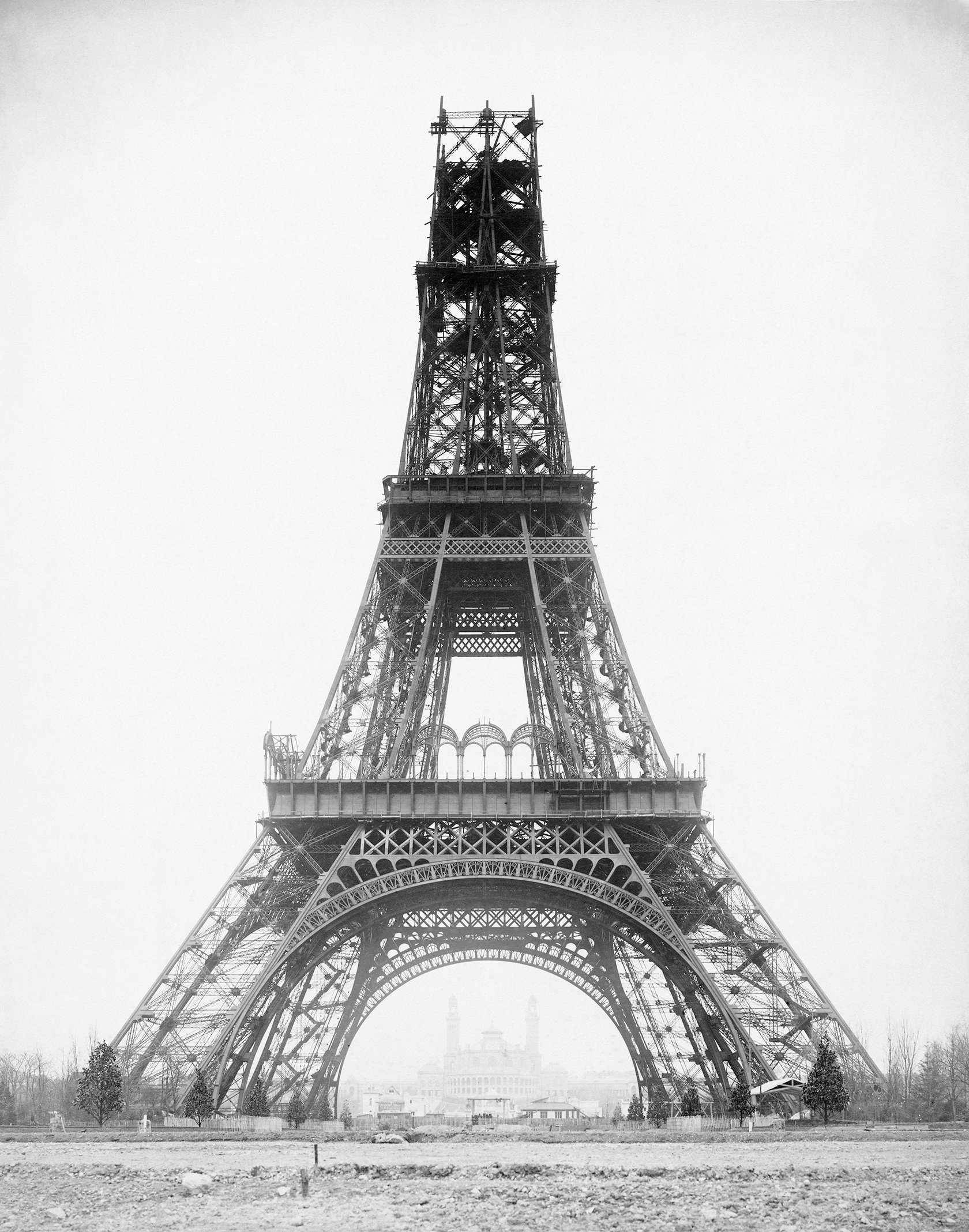
The Eiffel Tower in 1888 (Credit)
1. The Eiffel Tower under construction
Way back in 1888, the half-finished Eiffel Tower made for an intriguing sight. The building would soon reach 300 meters–the tallest building in the world at the time–and would form the entrance to the Universal Exhibition (which you’ll read more about in a moment). In this picture, you can get a good idea of how they constructed the Iron Lady from each leg and into the middle. You can also surely imagine not only how the project would have been the talk of the town, but also a great advert for what was to be an enormous exhibition the following year.
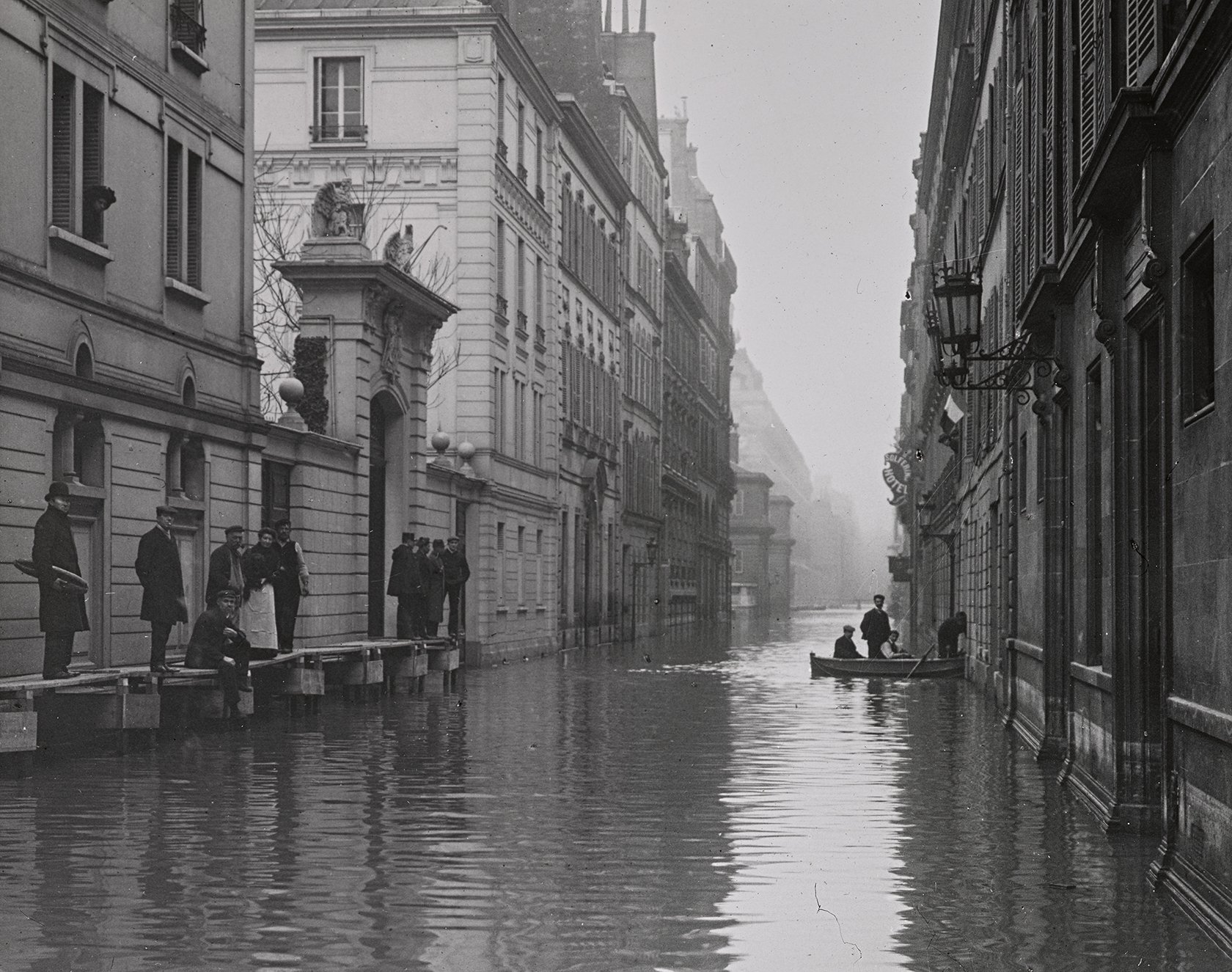
Rue de Lille during the Paris flood of 1910 (Credit: Séeberger frères / Centre des monuments nationaux)
2. Rue de Lille flooding in 1910
In early 2021 the river Seine flooded, but not even remotely as seriously as it did in 1910. Back then, the water flooded through the Metro tunnels and storm drains, taking Parisians by surprise and causing mayhem for weeks. In this image, you can see the rue de Lille completely submerged, with locals having no choice but to take a boat from A to B. Rue de Lille runs parallel to the river, but is behind the Musée d’Orsay, which gives you an idea of how much the flood extended beyond the river banks.
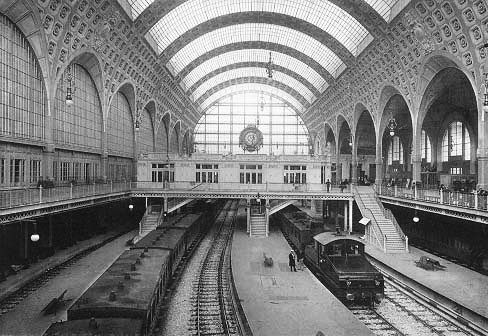
The Gare d’Orsay station about 1900 (Credit)
3. When Musée d’Orsay was a train station
Speaking of the Musée d’Orsay, did you know that it was a popular train station up until 1939? If you read some of Hemingway’s old books about Paris, you’ll see him referring to the Orsay as a station, which seems quite unusual as we’ve all known it as a famed art museum since 1986. In this image, taken around 1900, you can see that the interior has hardly changed since its days as a station, except in the place of passengers we now have art enthusiasts and in the place of trains we have some of the most incredible sculptures and art the world has ever seen.
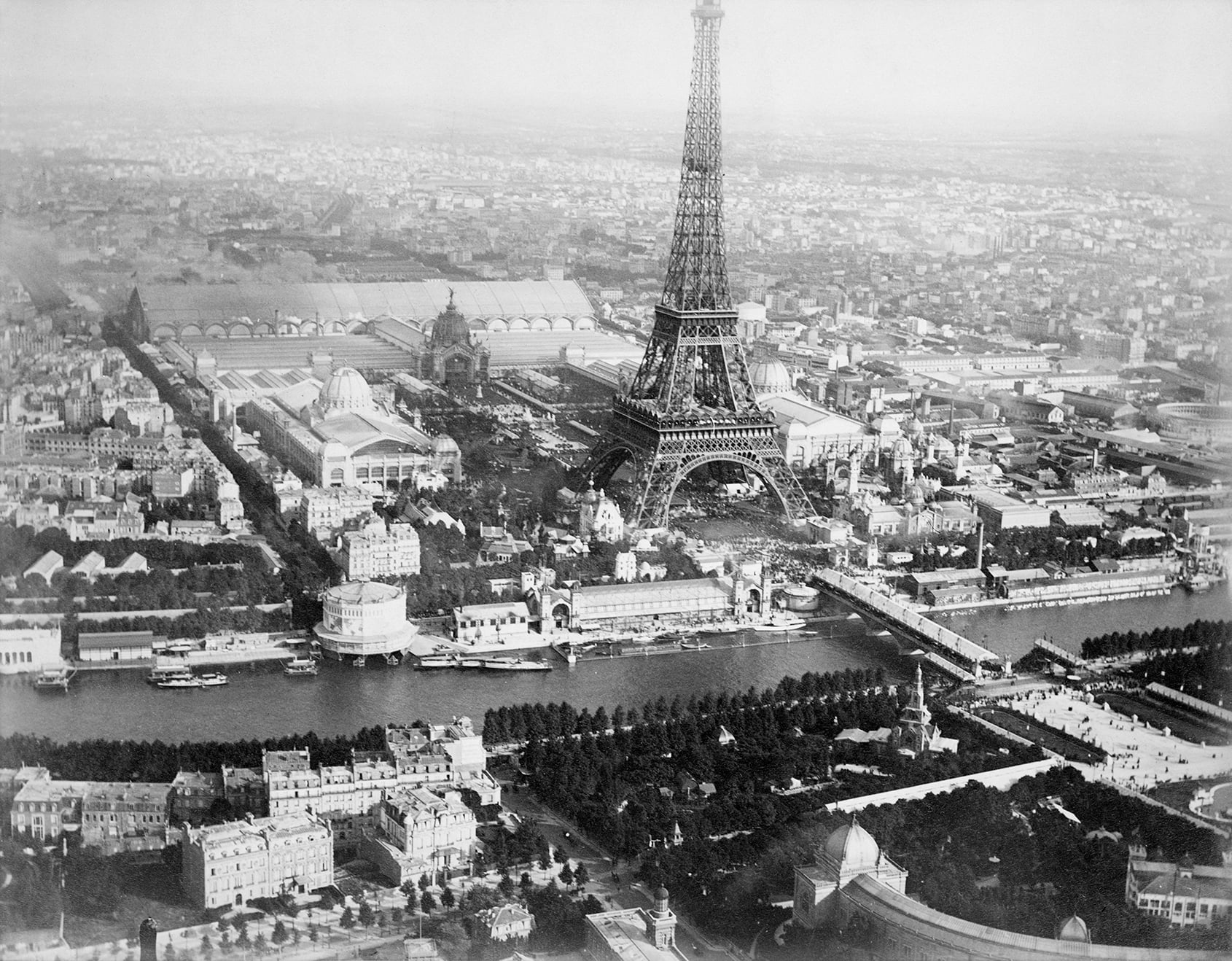
Aerial view of the Eiffel Tower and Universal Exhibition in 1889 (Credit)
4. A view over the Universal Exhibition
For this picture we’re heading back to the Universal Exhibition of 1889, which was an enormous showcase of art, culture and technology. It was held to celebrate the 100th anniversary of the Storming of the Bastille and intended to pull France out of an economic slump. And no costs were spared to entertain the 32 million visitors. In the picture above, you can get an idea of the sheer size of the exhibition. The Eiffel Tower acted as the entrance and the surrounding pavilions of iron and glass housed the exhibitions. All of these pavilions have since been torn down and replaced with residential buildings – some of which feature Paris Perfect apartments! This photo, taken from a hot air balloon, doesn’t show that the exhibitions extended to the north of the river at Trocadéro and over at the Invalides Esplanade.
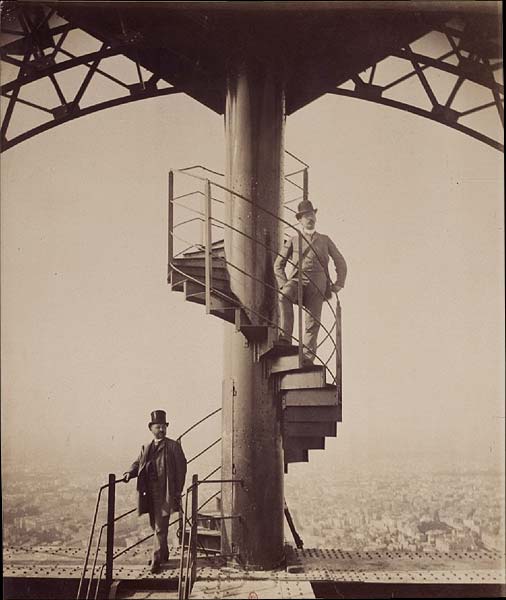
Gustave Eiffel (lower left) standing on the Eiffel Tower (Credit)
5. The Eiffel Tower engineer standing on it!
In this image, Gustave Eiffel himself stands on his great tower! The picture was taken the 1st of January 1889, right in time for the Universal Exhibition. Did you know that the Eiffel Tower is the only construction from the exhibition that survived until today? Construction on the tower took two years, two months and five days, and five hundred workers. By the end of the exhibition–which lasted 173 days–almost 2 million people had climbed the structure.
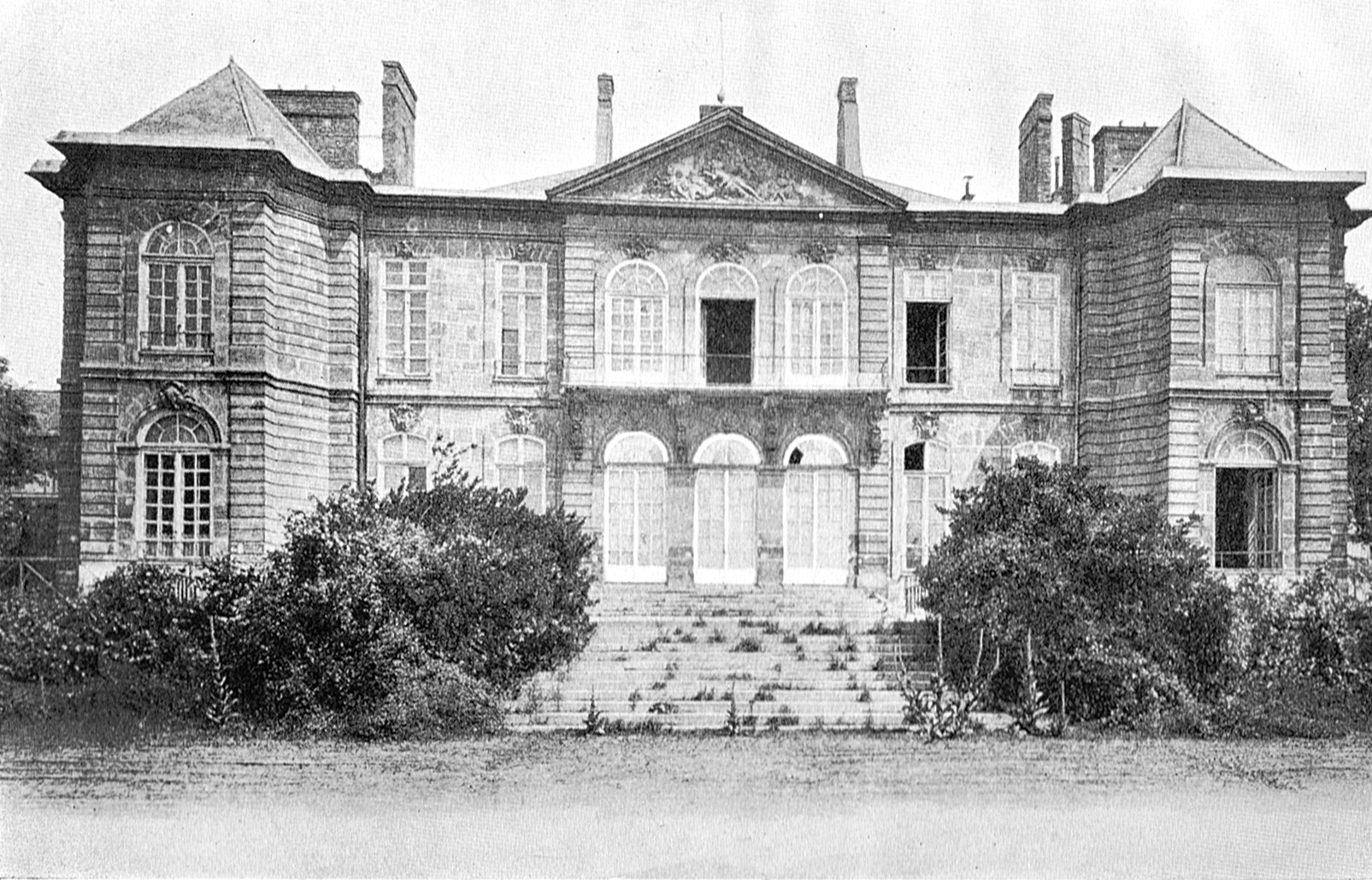
The Hôtel Biron in the 1910s (Credit)
6. The building that almost didn’t become the Musée Rodin
The fantastic Hôtel Biron that plays home to the Musée Rodin today has an extraordinary past. In the centuries since its construction in 1732, it has housed nobles, ambassadors, and was even a boarding school for girls from aristocratic families. It eventually fell to disrepair in the early 1900s, but in 1908 the sculptor Auguste Rodin began to use it as a studio on the lower floors and met with friends in the overgrown gardens. The building was set to be demolished and turned into flats, but the Frenchman, who had taken a liking to the historical building, managed to convince the French authorities to convert the mansion into a collection of his works for the public. The museum as we know it today opened in 1919, two years after Rodin’s death. This photo was taken about 1914, when Rodin was already creating his masterpieces in the space.
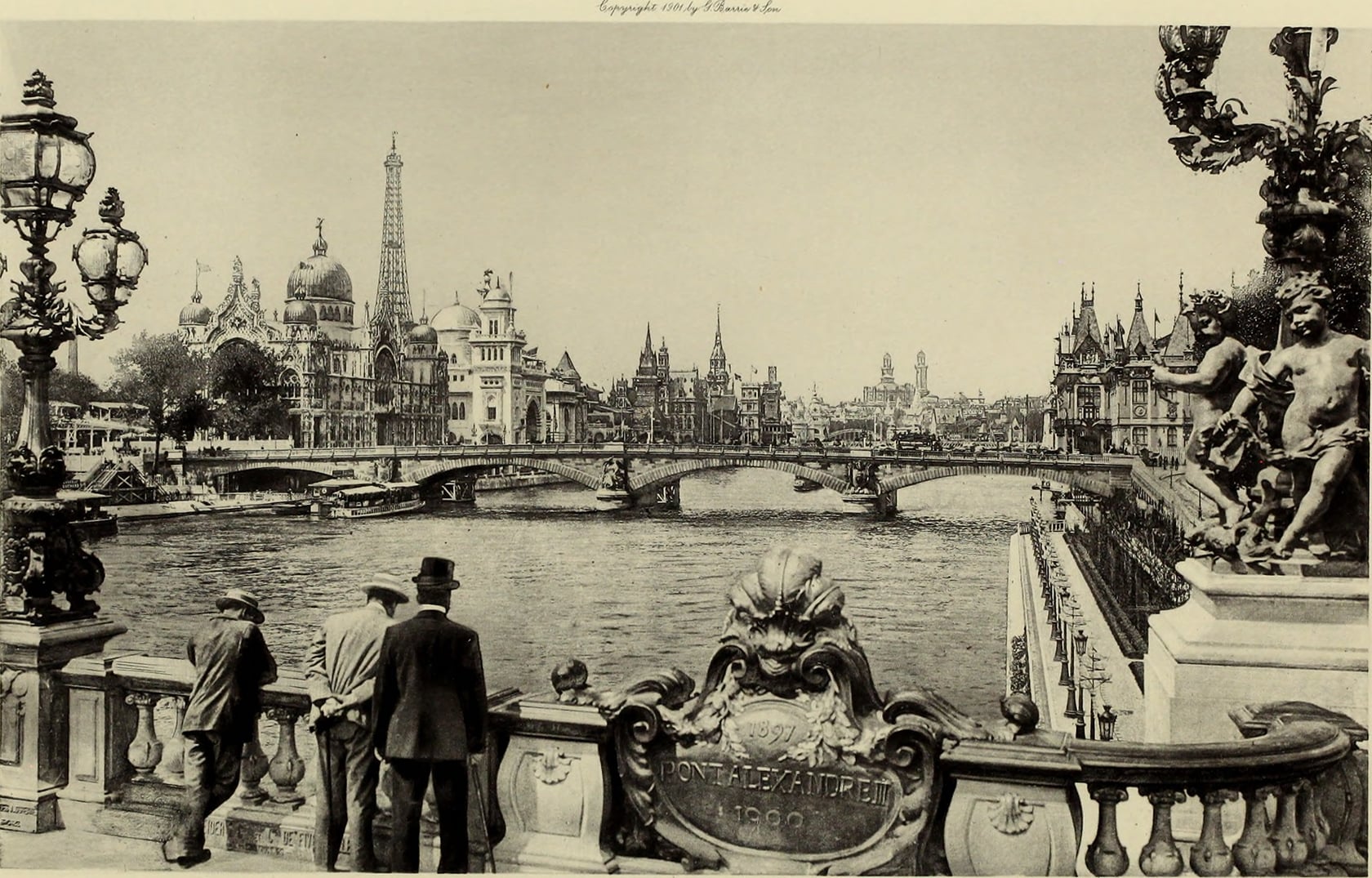
The 1900 Exposition Universelle as seen from the newly built Pont Alexandre III (Credit)
7. An early photo of the Pont Alexandre III
When we talk about universal exhibitions, most people think of the one Eiffel Tower version in 1889. But in 1900 some 50 millon people visited an enormous new centennial fair that showcased innovations like moving sidewalks, Ferris wheels and escalators. But one of the shining stars of this exhibition was the extravagant Pont Alexandre III, which was unveiled to great acclaim and played a practical role too in connecting the exhibitions on the Left and Right Banks. In this fantastic photo, we can see gentlemen inspecting the view from the newly opened bridge and a Paris skyline that hardly resembles that of today.
There you have it — seven of the most fascinating historic photos from the seventh arrondissement, at least according to Oliver. Don’t miss the rest of his guides, including the Best Coffee Cafés, Best Streets in the 7th Arrondissement and Best Eiffel Tower Views.
The Earful Tower is a weekly podcast with guests ranging from tour guides to TV presenters, cooks to comedians, and authors to ambassadors. If you want more of The Earful Tower, subscribe to his podcast on your phone and check out the links below!
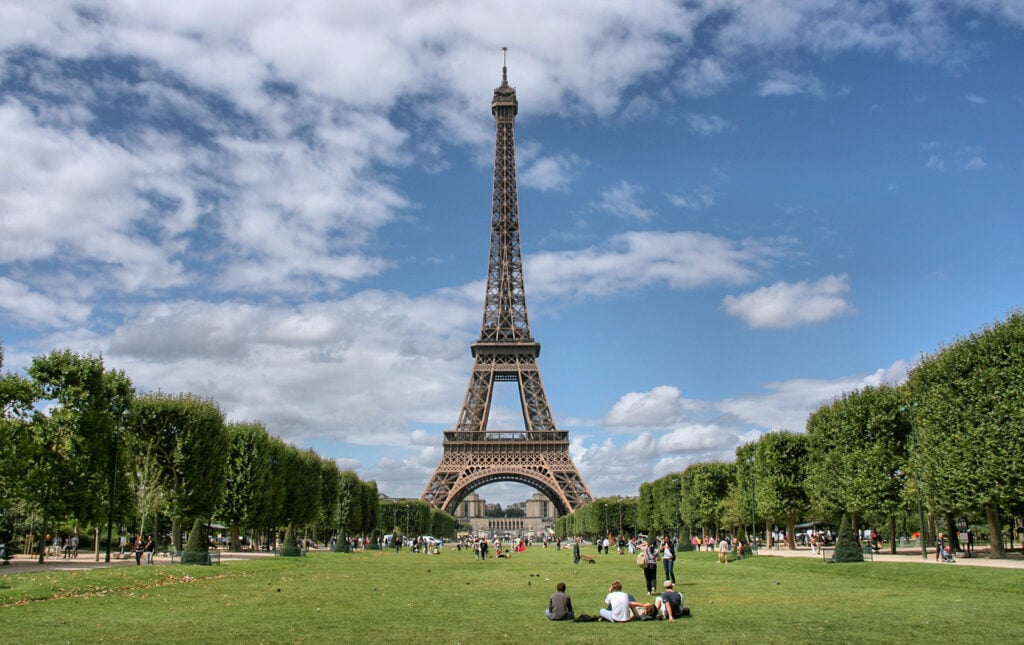
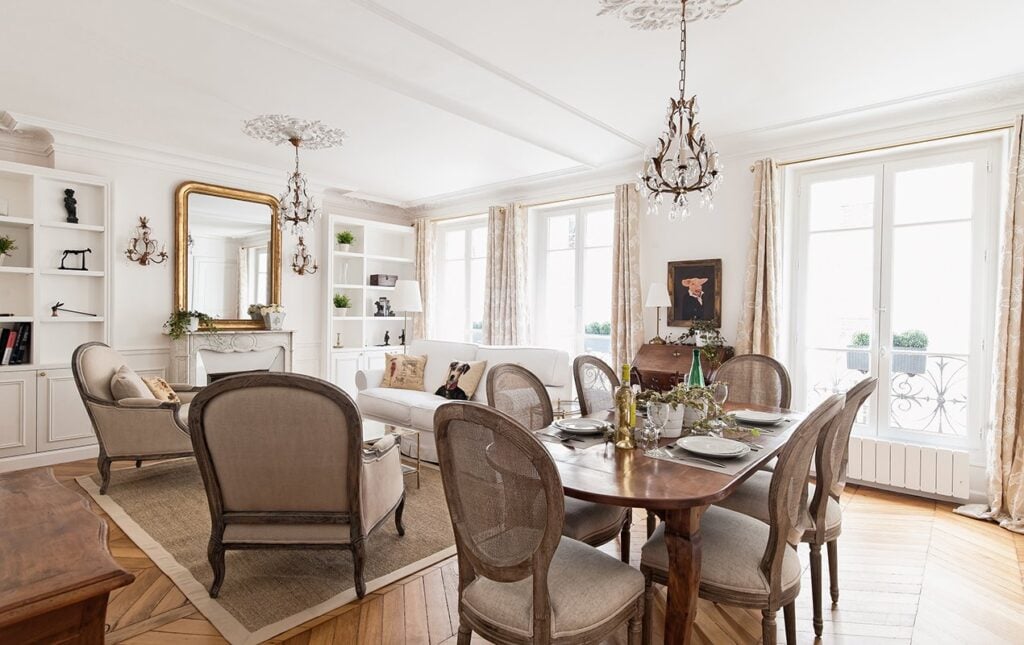


Ooh la la i loved receiving this Paris Perfect email featuring the most magnificent Eiffel Tower and photos from an early time. Thank you!
So happy you enjoyed it! It’s fascinating to travel back in time to see Paris.